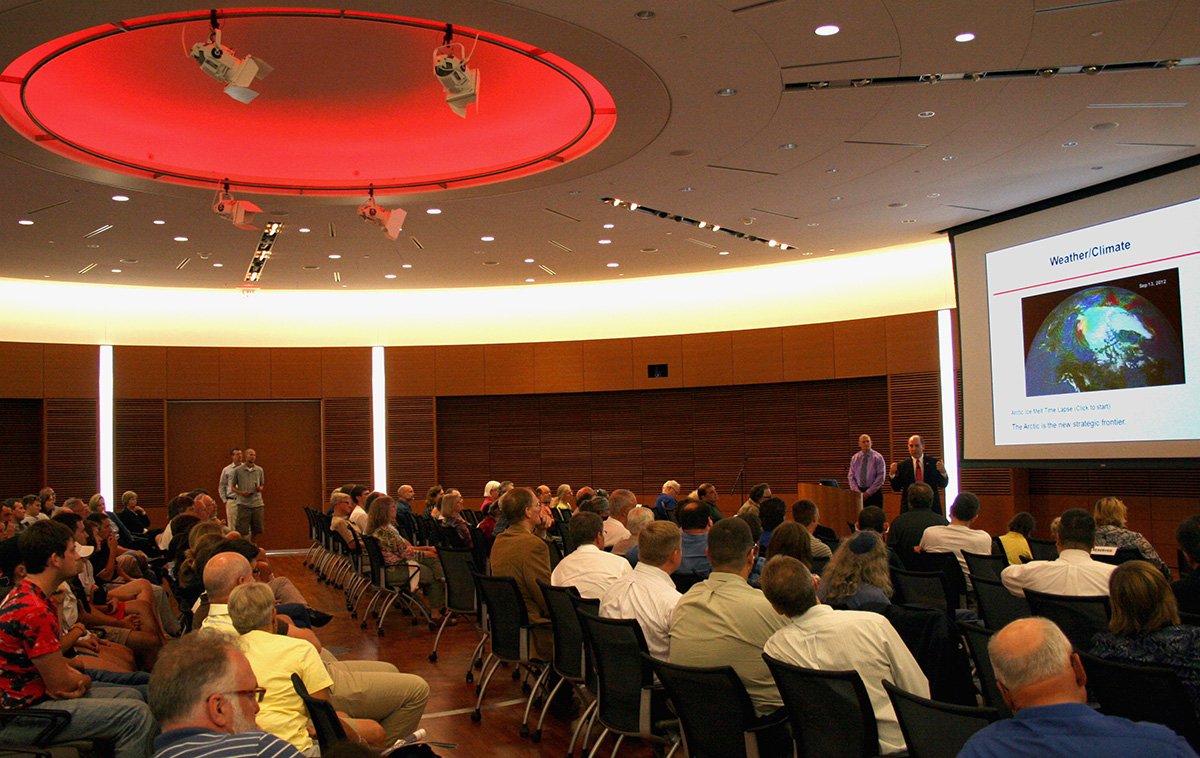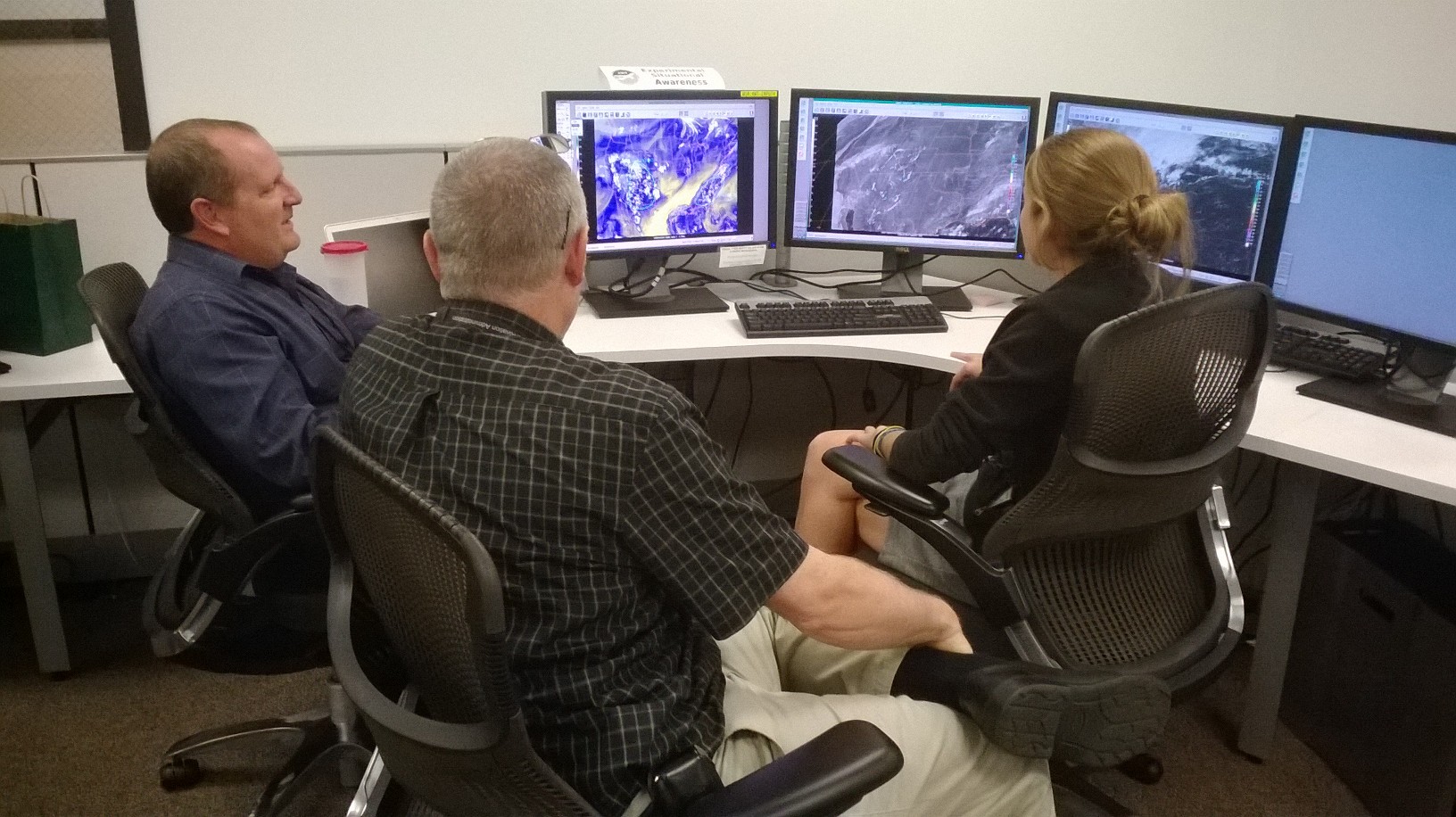
[ Archive ]

 |
ASPB and CIMSS Weekly Report
[ Archive ] |
 |
IN THE PRESS:
ITEMS FOR THE ADMINISTRATOR:
ITEMS FOR THE ASSISTANT ADMINISTRATOR:
ITEMS FOR THE OFFICE DIRECTOR, STAR:
NWS Director Louis Uccellini: a Weather-Ready Nation Town Hall: Sponsored
by the Space Science and Engineering Center (SSEC) and the Department
of Atmospheric and Oceanic Sciences (AOS), National Weather Service
(NWS) Director Louis Uccellini held a Weather-Ready Nation Town Hall on
22 August 2013 at UW-Madison. Along with the weather-ready nation message,
Dr. Uccellini clearly referenced NOAA's reliance on, and longstanding
partnership with, the UW, and the satellite and educational communities.
More information is available at http://go.wisc.edu/qs04z4,
http://www.ssec.wisc.edu/news/articles/5048, http://video.channel3000.com/watch.php?id=52523, and
http://video.channel3000.com/watch.php?id=52538. (J. Phillips, SSEC,
608-262-8162)
 (Click image to enlarge)
(Click image to enlarge)
Figure caption: Dr. Uccellini presenting at the Weather-Ready Town Hall, UW-Madison. Credit: M. Hobson.
Recommendation 6 of NOAA SAB Report is a Bad One: Steve Ackerman participated in a telecon with the Cooperative Institute (CI) Executive Committee and Dr. Steven Fine regarding Recommendation 6 of the NOAA Science Advisory Board (SAB) report In the Nation’s Best Interest: Making the Most of NOAA’s Science Enterprise. The recommendation stated (Recommendation 6): "The PRTF recommends that NOAA assess the Cooperative Institutes in terms of their scientific focus, funding and staffing levels to insure that the CIs have sufficient support to adequately leverage NOAA’s investment and that they are aligned with strategic priorities. The Cooperative Institutes are a uniquely valuable part of the NOAA portfolio. They provide the agency with access to graduate students, post-doctoral fellows, and faculty in the universities and contribute to the agility and flexibility of the total R&D portfolio. However, according to the information provided to the task force, NOAA’s current investment in CIs is inadequate for the number of Institutes being supported. Interviews with CI representatives, for example, revealed that budget reductions were undermining the original intent of these CIs to leverage NOAA’s resources. This suggests that, because the CIs are so valuable to NOAA, the agency should reexamine and adjust the total number of CIs so that it can provide adequate levels of support to those CIs that are retained and allow them to function efficiently and effectively. In making these decisions, the key principles should be alignment with the Next Generation Strategic Plan and the recognition that the greatest value of CIs is flexibility, leveraging external scientific talent, and connecting NOAA to the broader scientific community." This statement is a misrepresentation of the issue and needs to be corrected. The main issue regarding NOAA’s support of it’s CIs is associated with Task I funding, which supports education, outreach and administration costs. Support via Task I is also not an issue with all CIs, as some are funded adequately. There is an agreed upon mechanism now to support Task I funding which should be implemented in 2014. Task I issues are no justification to conclude that there is a need to reduce the number of CIs. The time to assess the need for a CI is during the recompetition and their 5-year review as documented in NOAA’s CI Handbook. (S. Ackerman, CIMSS, 608-263-3647)
Manuscript Examining Flash Drought Development Using GOES Infrared Imagery Published: A manuscript entitled “Examining Rapid Onset Drought Development using the Thermal Infrared-Based Evaporative Stress Index” by Otkin, et al. was published in the August issue of Journal of Hydrometeorology. The paper showed that standardized change anomalies in the GOES-based Evaporative Stress Index provide early warning of incipient drought impacts on agricultural and natural ecosystems sooner than many other drought indicators. (J. Otkin, CIMSS, 608-265-2476)
ITEMS FOR THE DIVISION CHIEF, CoRP:
 (Click image to enlarge)
(Click image to enlarge) (Click image to enlarge)
(Click image to enlarge)VISITORS:
Visitor from Delta Airlines: Tom Fahey, meteorology department manager at Delta Airlines, visited the Advanced Satellite Products Branch (ASPB) on August 23, 2013. The main purpose of the visit was to discuss volcanic clouds, which are a major aviation hazard. Delta Airlines uses the NOAA/NESDIS/STAR volcanic ash products that are openly available on the web (http://volcano.ssec.wisc.edu/imagery/view/) for flight planning. Thus far, their feedback indicates that the products are very useful. Observations from Delta pilots flying within view of volcanic ash clouds will be used to help validate the NOAA/NESDIS/STAR volcanic ash products. (M. Pavolonis, E/RA2, 608-263-9597, Mike.Pavolonis@noaa.gov)
NEXT WEEK:
LOOKING AHEAD:
| Archived Weeklies Page | Submit a report item |